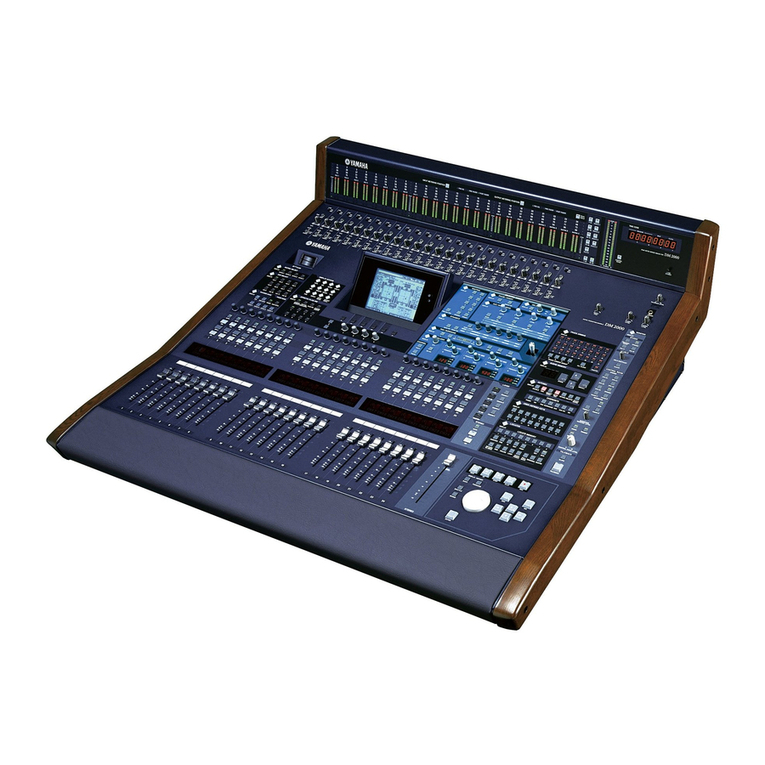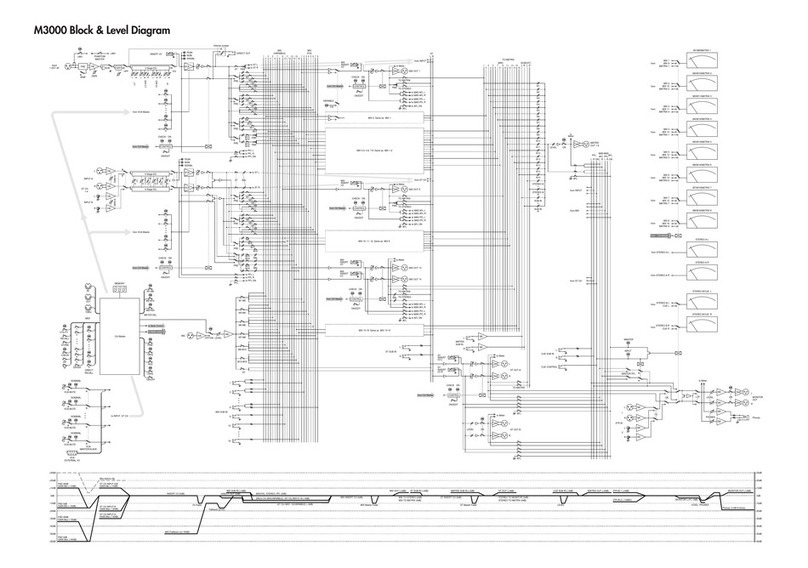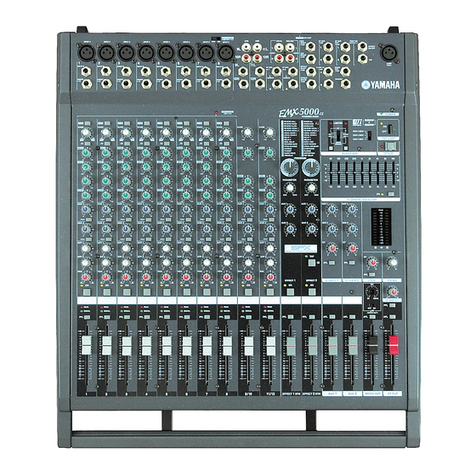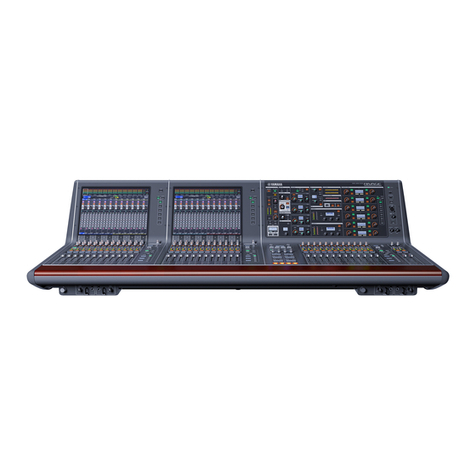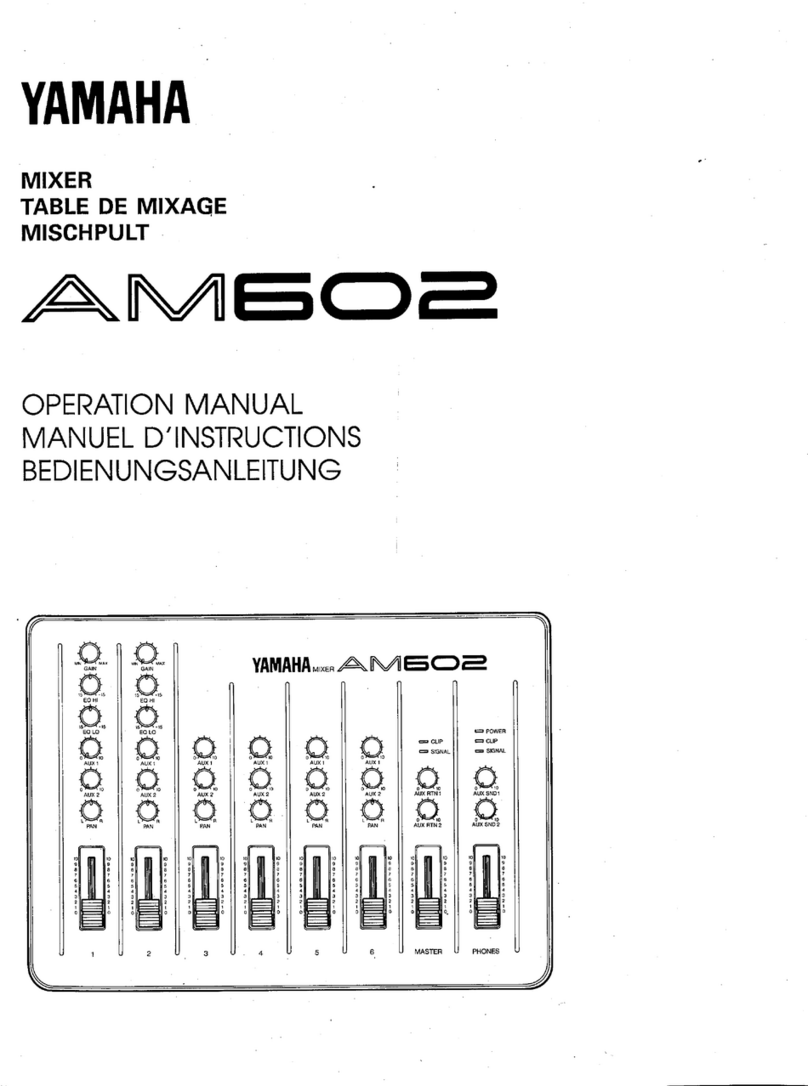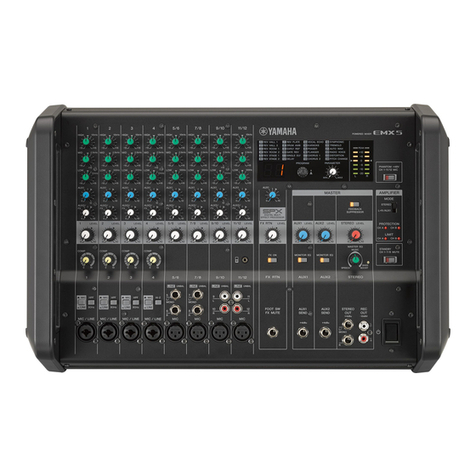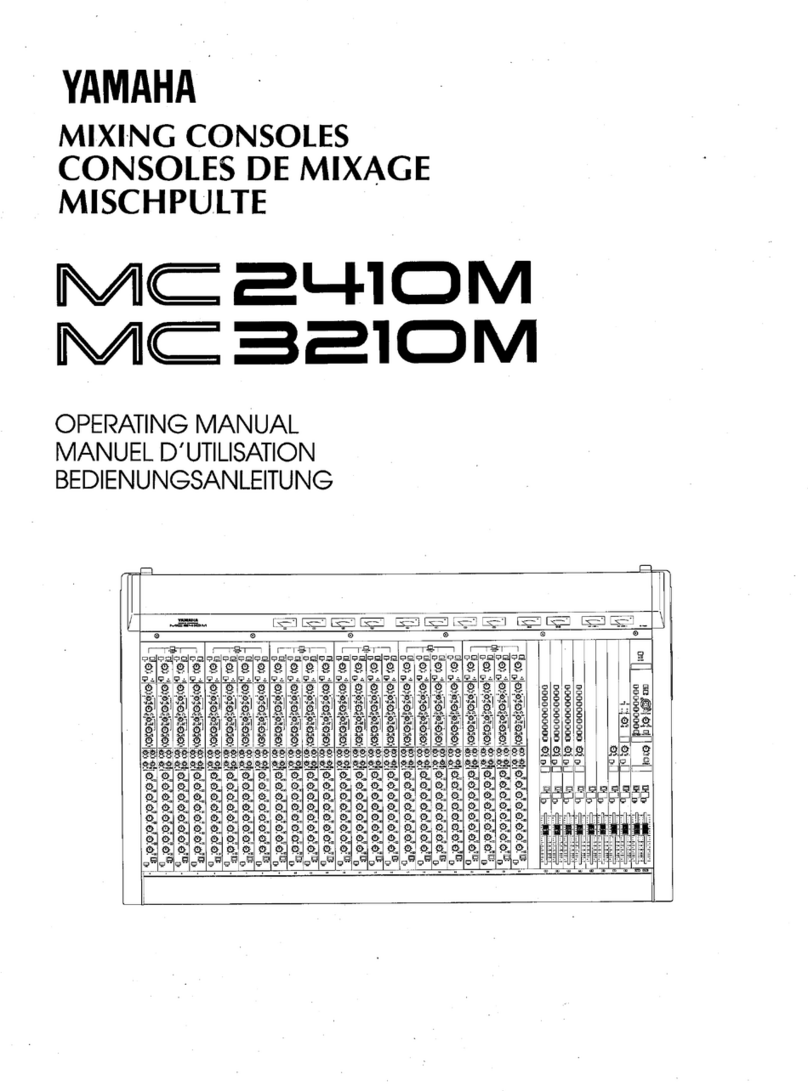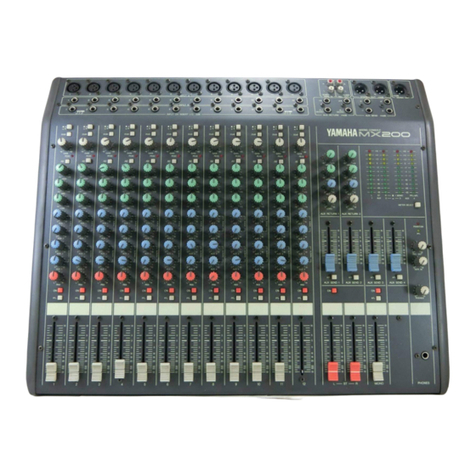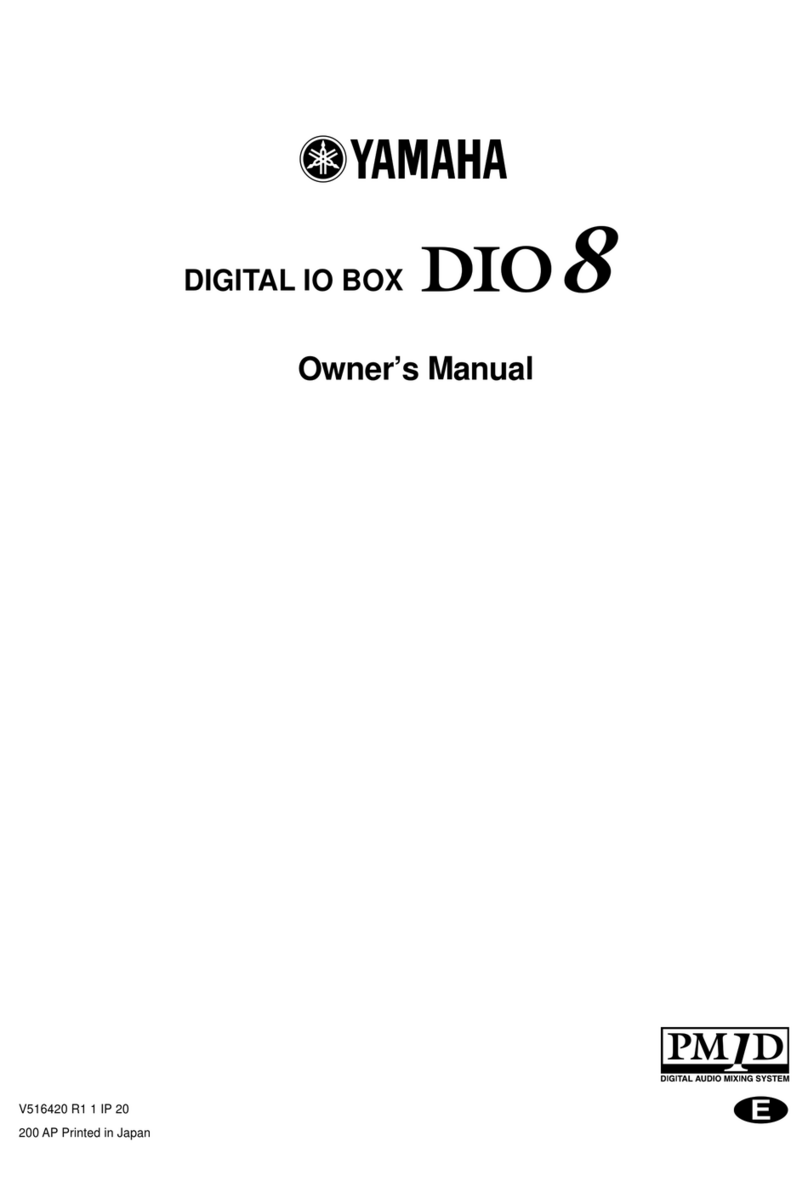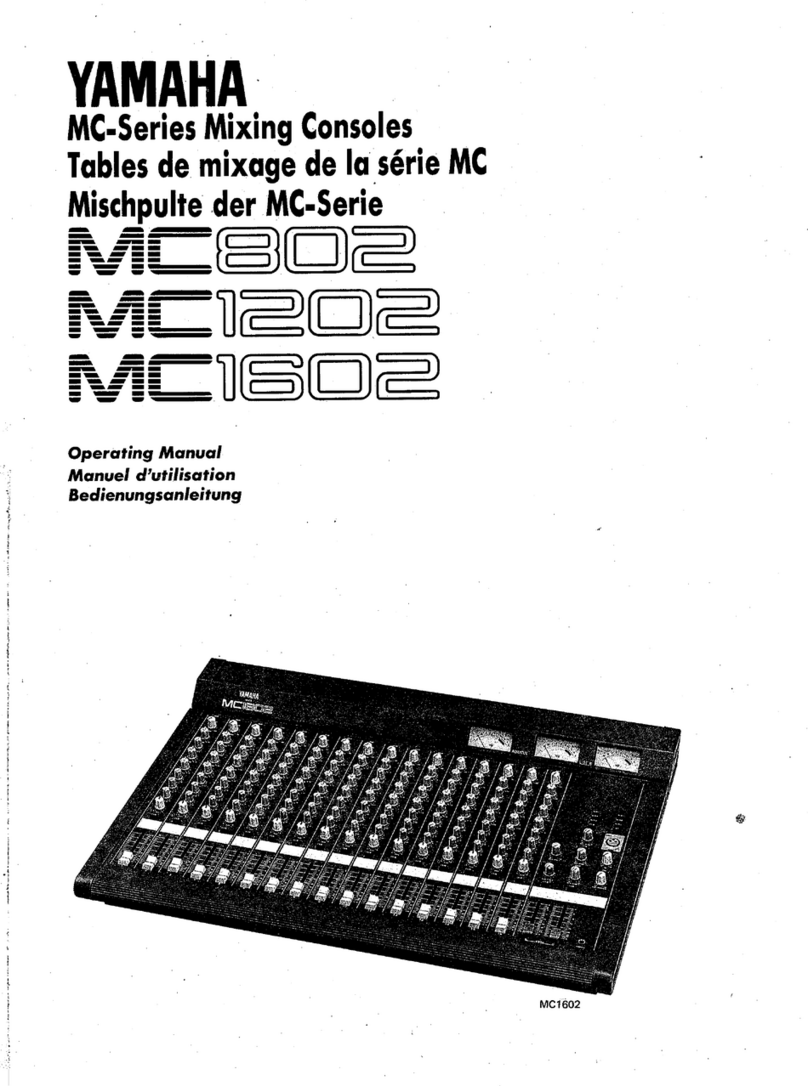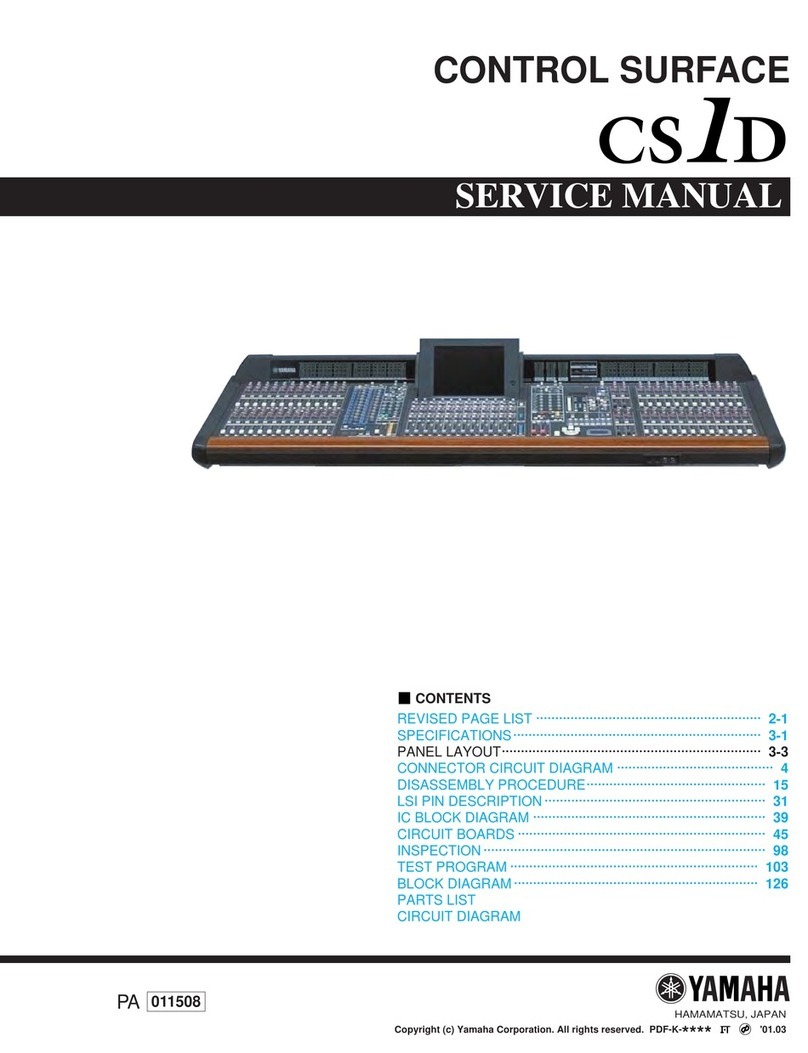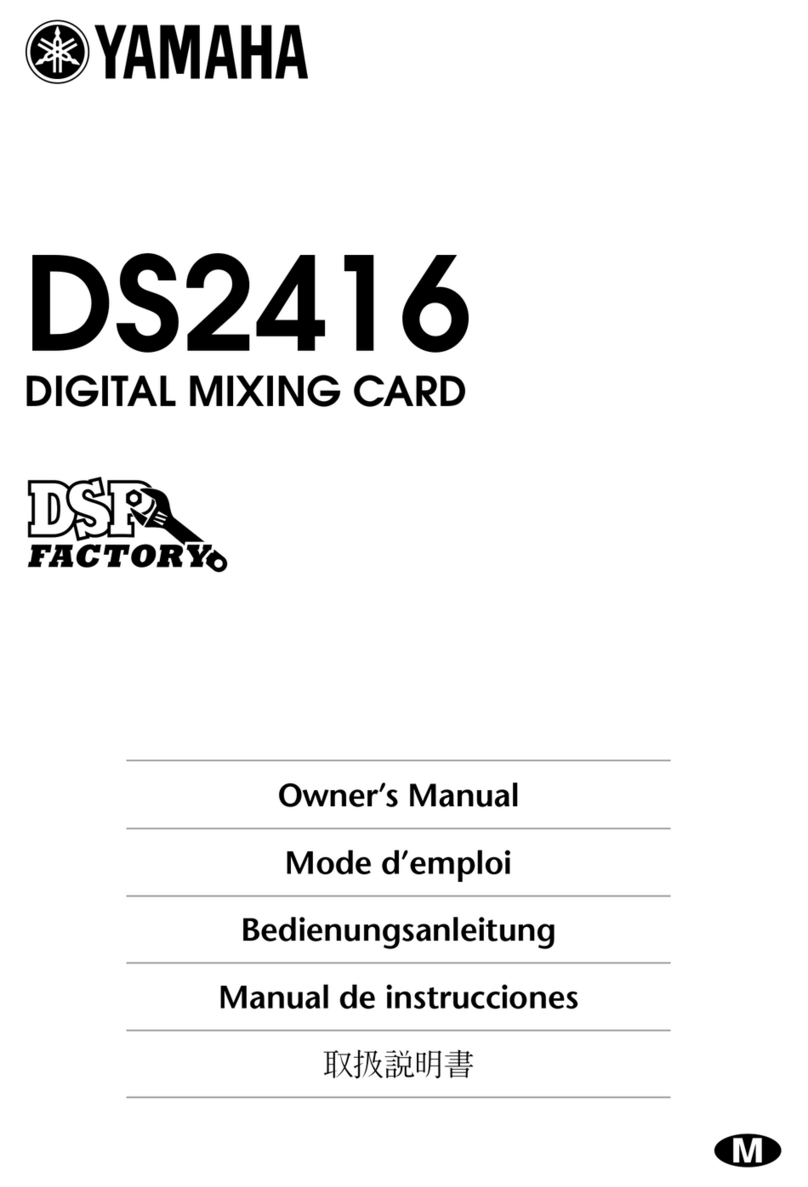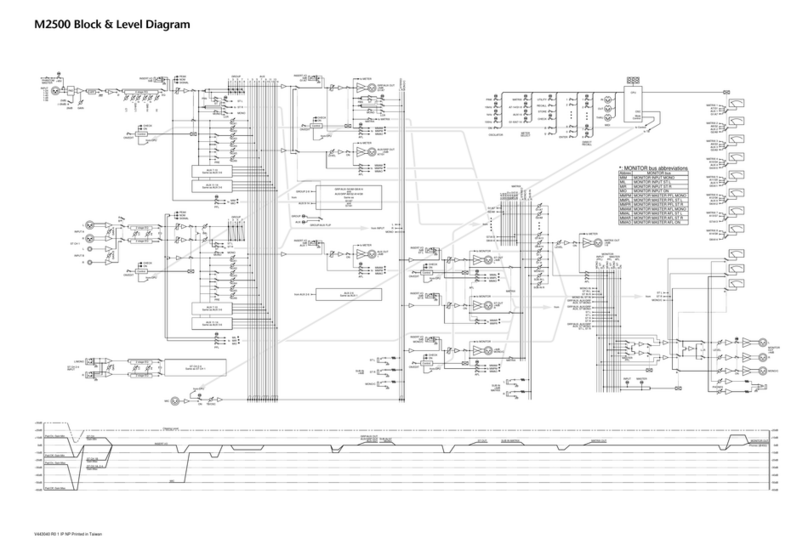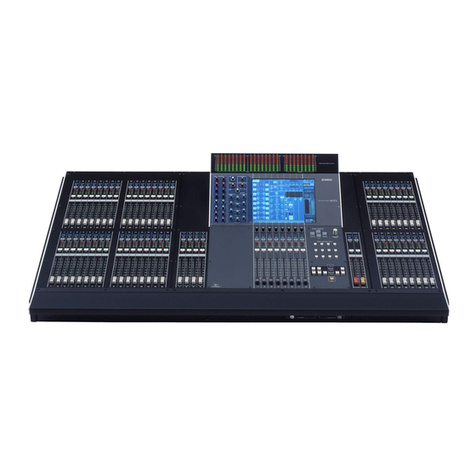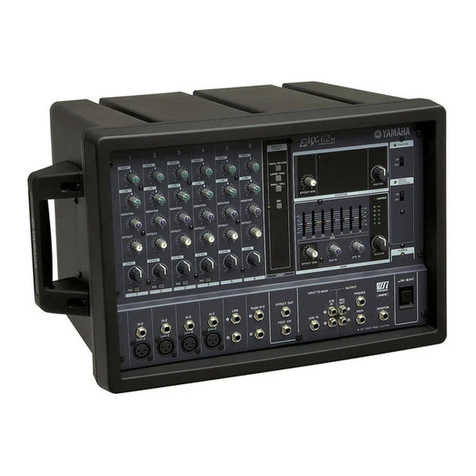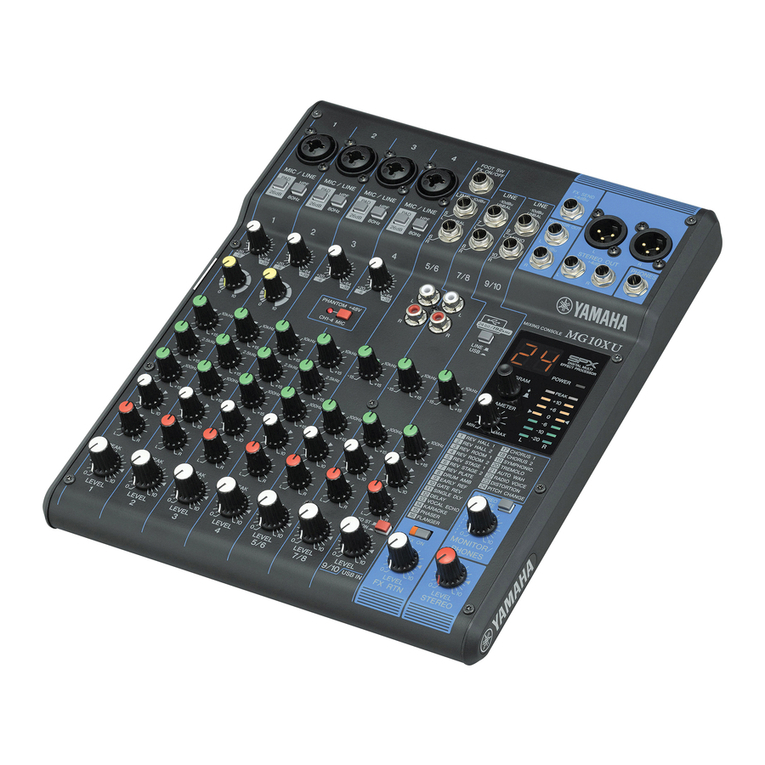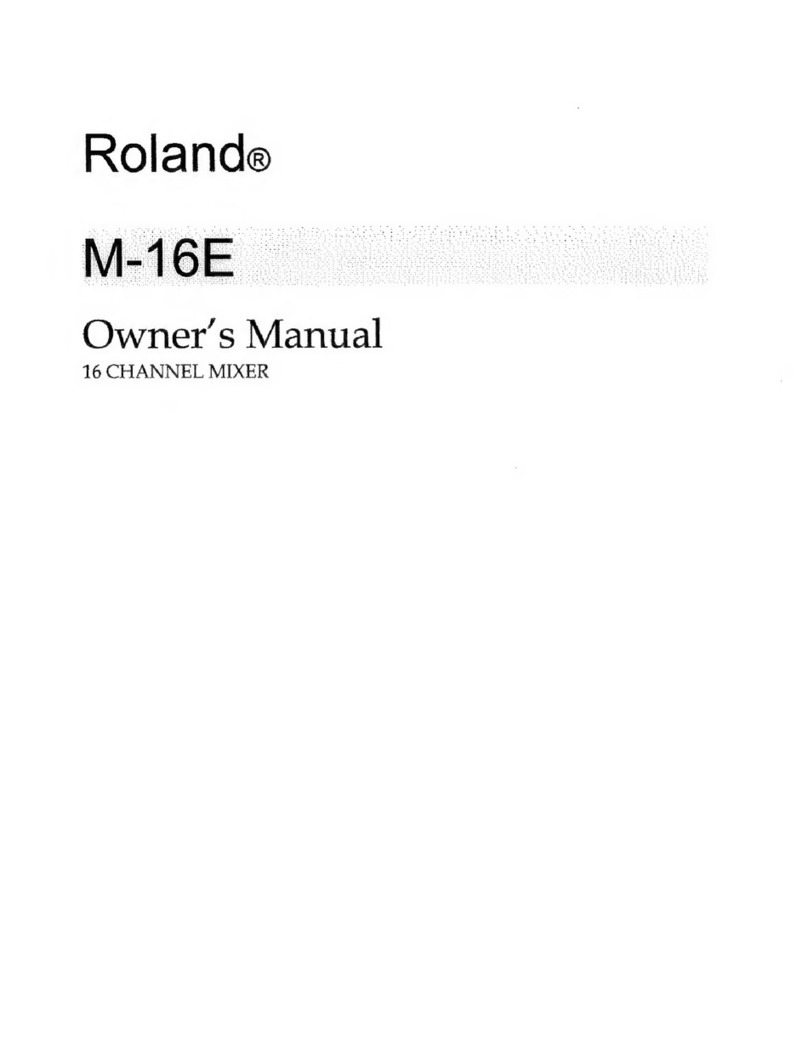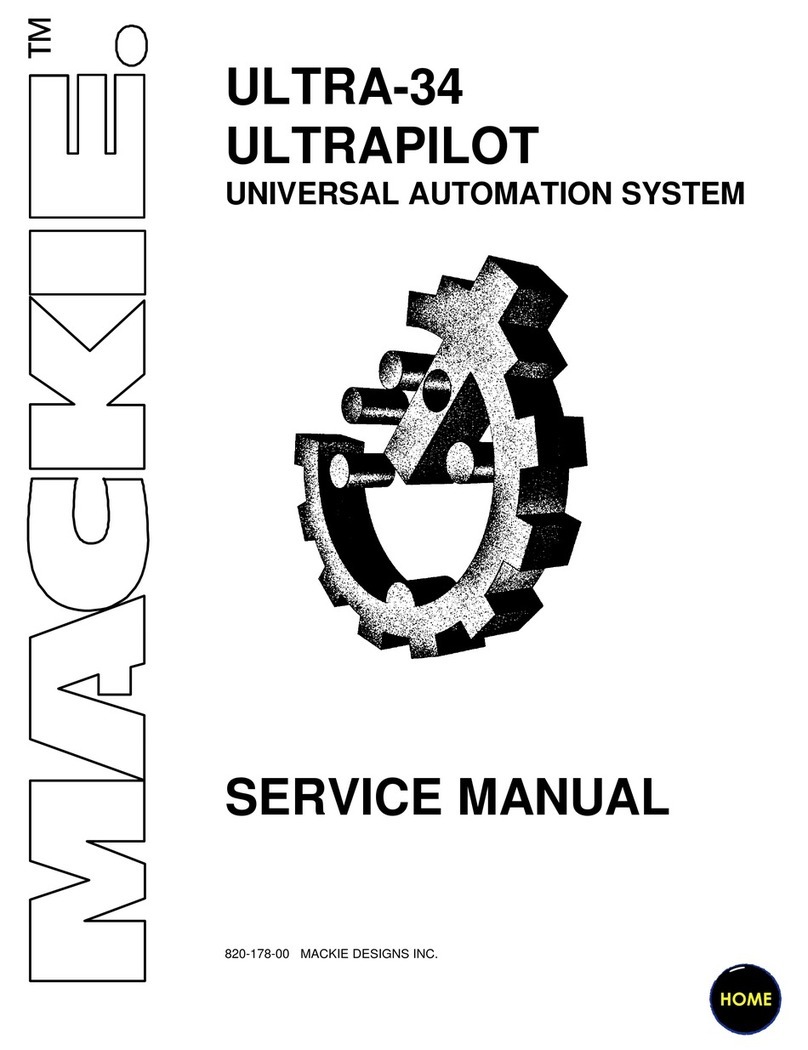" AUX Controls
(1,2
&
31
The MC-series mixing consoles have three independent AUX busses which are fed by the
corresponding AUX
controls
on the
input
channels_ Each AUX
control
determines
the
level of
the
signal sent from
that
channel to
the
correspondingly numbered AUX mixing buss, which in
tum
feeds the correspondingly
numbered
AUX SEND control and AUX SEND jack on the
console's rear panel.
The
AUX controls can be used
to
determine the
amount
of
signal from the
corresponding input channel sent
to
external effect devices
or
power amps fed by the AUX
SEND
jacks_
• AUX 1
is
factory pre-wired for pre-EO/pre-fader operation, so the AUX 1 signal
is
not
affected by the setting of the channel EO controls
or
fader_ An internal jumper allows the
AUX 1 control
to
be rewired for post-EO/post-fader operation_
* AUX 2 and AUX 3 are factory pre-wired for post-EO/post-fader operation, so the AUX 2
and AUX 3 signals are affected by
the
setting
of
the
channel EO controls and fader_Internal
jumpers aI/ow the AUX 1 control
to
be rewired for pre-EO/pre-fader operation_
• An internal POST EO jumper allows the AUX controls to be' further re-configured for
post-EO/pre-fader operation_
• REFER THE ABOVE-MENTIONED REWIRING JOBS TO OUALIFIED YAMAHA SER-
VICE PERSONNEL!
o PAN Pots
The
PAN
pot
determines the position
in
the stereo sound field
at
which the
sound
from
that
channel
is
heard_
Rotated
fully counterclockwise the channel signal will be delivered from the
left stereo
output
only, and will be heard
at
the far left of the sound
field_
If
the
PAN
pot
is
turned fully clockwise, the sound from
that
channel will appear
at
the far right
of
the stereo
sound field. If the
PAN
pot
is
set
at
its
center
position, the channel signal will be
sent
equally
to
both the left and right channels, causing the sound
to
appear at
the
center
of the sound
field_
Intermediate
PAN
pot
settings cause
the
sound
to
be heard
at
the corresponding position,
8 CUE Switch
When the
CUE
switch
is
pressed, the pre-EO/pre-fader signal from
that
channel
is
fed
to
the
PHONES
output
via
the CUE/PHONES level cOrltrol. The channel cue signal will be added
to
any
other
active cue signal.
If
you
want
to
monitor
only the signal from a single channel, make
sure
all
other
CUE
switches are turned OFF_
4


